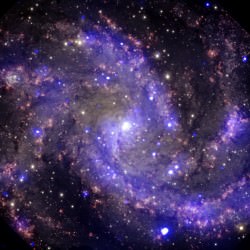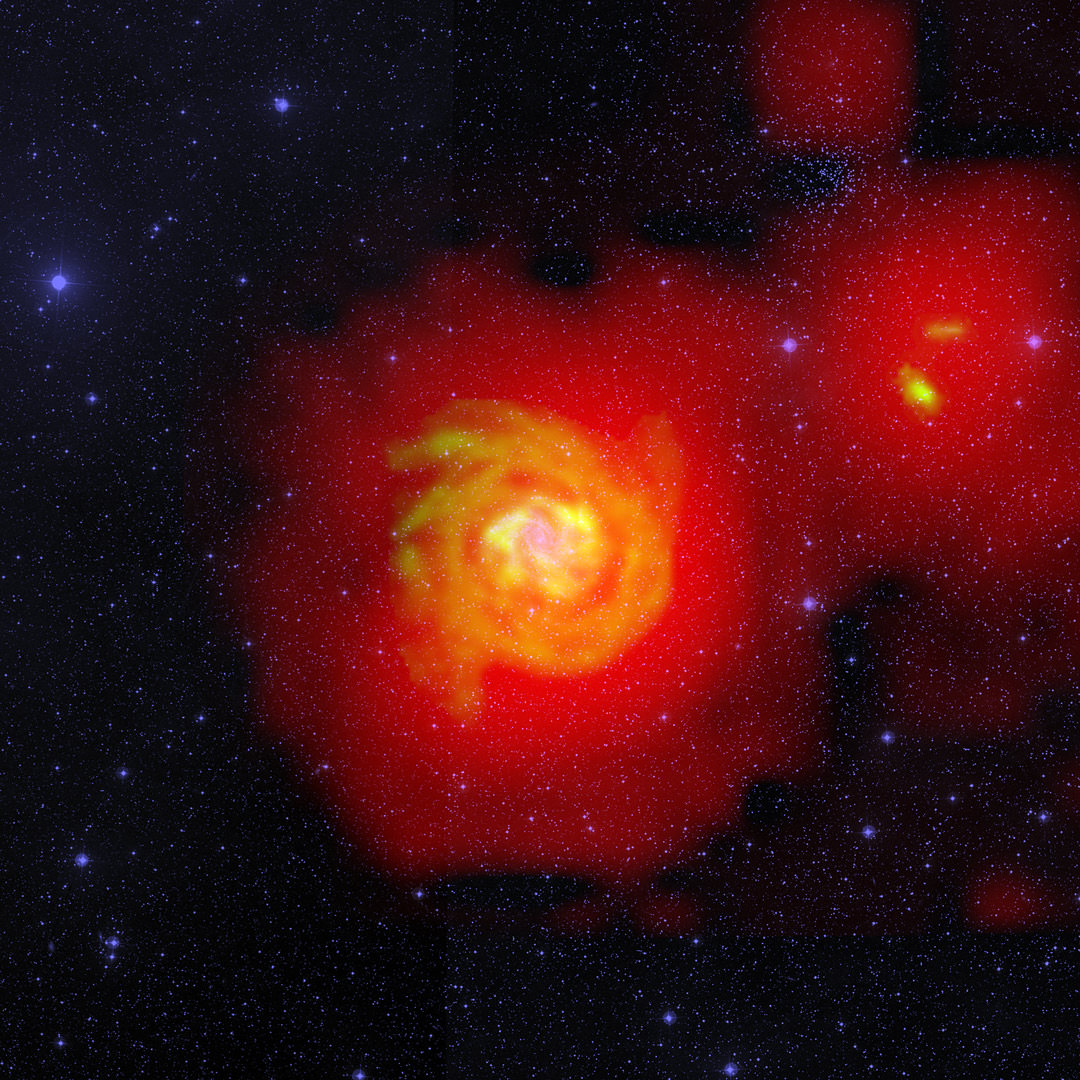What happens when a galaxy doesn’t have enough hydrogen to support its stellar production process? Why, it sucks it from its hapless neighbors like some sort of cosmic vampire, that’s what. And evidence of this predatory process is what’s recently been observed with the National Science Foundation’s Robert C. Byrd Green Bank Telescope (GBT) in West Virginia, in the form of faint “cold flows” bridging intergalactic space between the galaxy NGC 6946 and its smaller companions.
“We knew that the fuel for star formation had to come from somewhere,” said astronomer D.J. Pisano from West Virginia University, author of the study. “So far, however, we’ve detected only about 10 percent of what would be necessary to explain what we observe in many galaxies. A leading theory is that rivers of hydrogen – known as cold flows – may be ferrying hydrogen through intergalactic space, clandestinely fueling star formation. But this tenuous hydrogen has been simply too diffuse to detect, until now.”
NGC 6946 also goes by the festive moniker of “the Fireworks Galaxy,” due to the large amount of supernovae that have been observed within its arms — eight within the past century alone. Located 22 million light-years away between the constellations Cepheus and Cygnus, NGC 6946’s high rate of star formation has made astronomers curious as to how it (and other starburst galaxies like it) gets its stellar fuel.
One long-standing hypothesis is that large galaxies like NGC 6946 receive a constant supply of hydrogen gas by drawing it off their less-massive companions.

Now, thanks to the GBT’s unique capabilities — such as its immense single dish, unblocked aperture, and location in the National Radio Quiet Zone — direct observations have been made of the extremely faint radio emissions coming from neutral hydrogen flows connecting NGC 6946 with its smaller satellite galaxies.
According to a press release from the National Radio Astronomy Observatory:
Earlier studies of the galactic neighborhood around NGC 6946 with the Westerbork Synthesis Radio Telescope (WSRT) in the Netherlands have revealed an extended halo of hydrogen (a feature commonly seen in spiral galaxies, which may be formed by hydrogen ejected from the disk of the galaxy by intense star formation and supernova explosions). A cold flow, however, would be hydrogen from a completely different source: gas from intergalactic space that has never been heated to extreme temperatures by a galaxy’s star birth or supernova processes.
Another possible source of the cold flow is a previous collision with another galaxy, possibly even one of its own satellites, which would have left strands of atomic hydrogen in its wake. But if that were the case stars would likely have since formed within the filaments themselves, which has not yet been observed.
Pisano’s findings have been published in the Astronomical Journal.
Source: NRAO press release. Learn more about the Green Bank Telescope here.
Image credit: D.J. Pisano (WVU); B. Saxton (NRAO/AUI/NSF); Palomar Observatory – Space Telescope Science Institute 2nd Digital Sky Survey (Caltech); Westerbork Synthesis Radio Telescope

